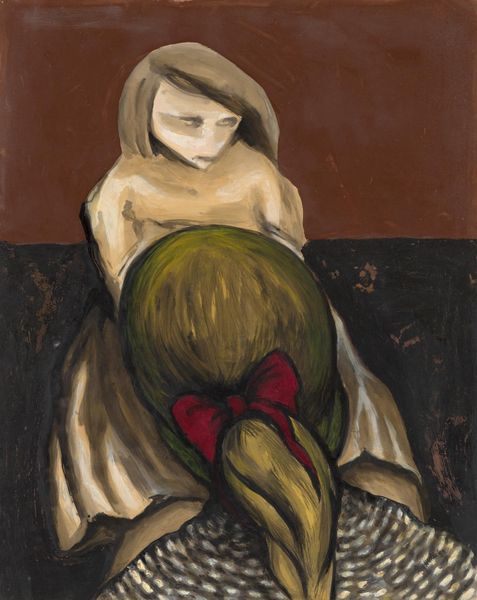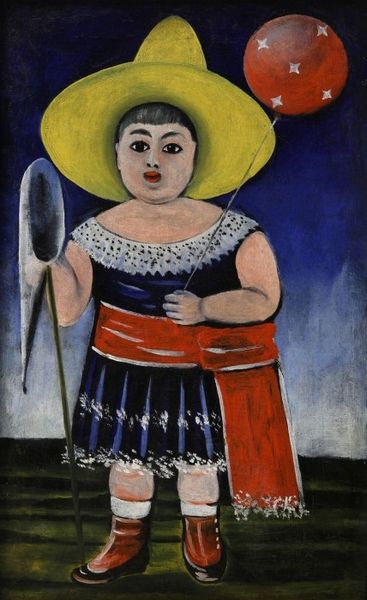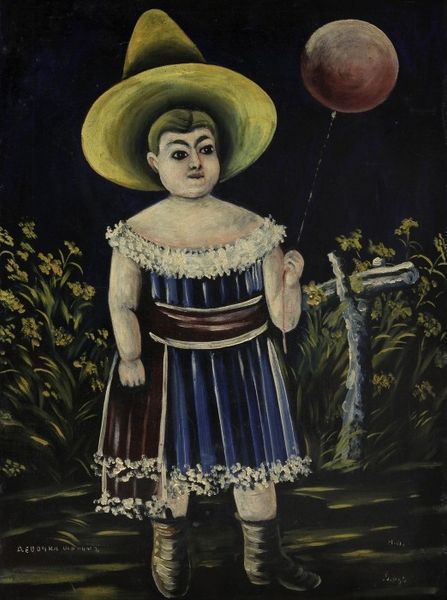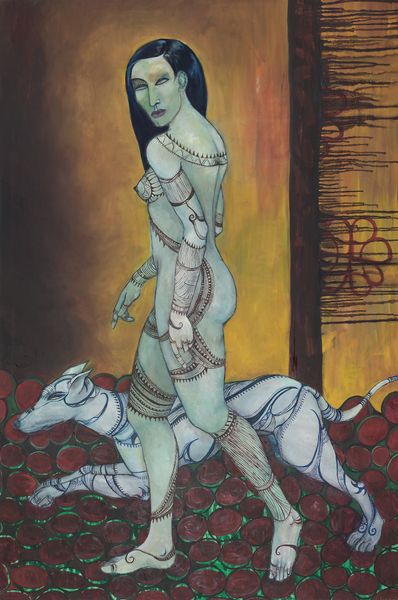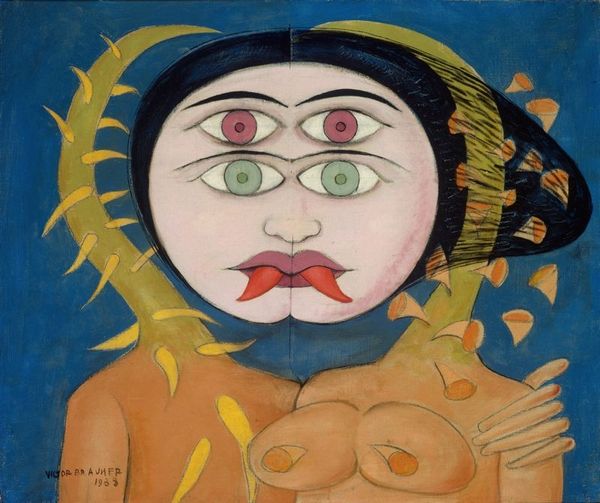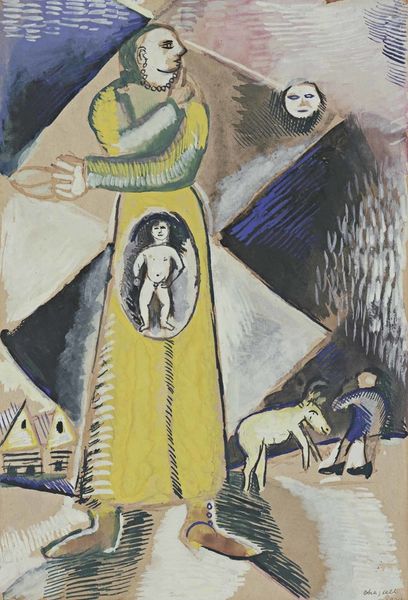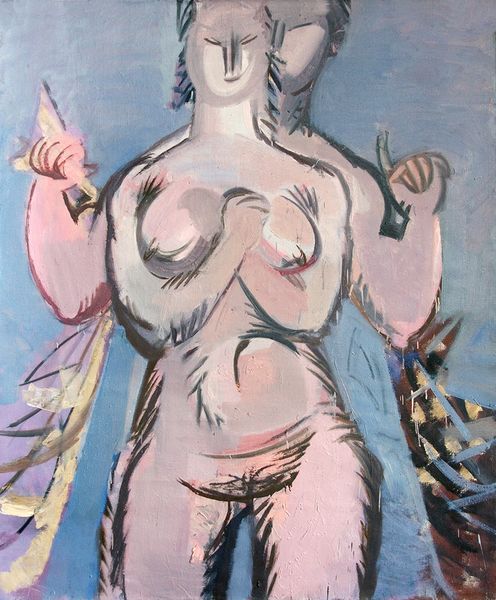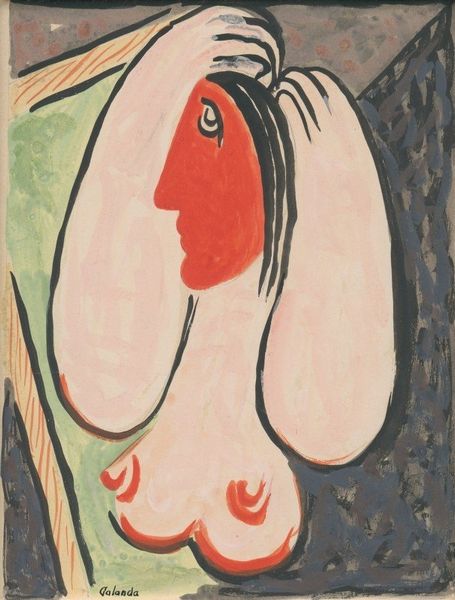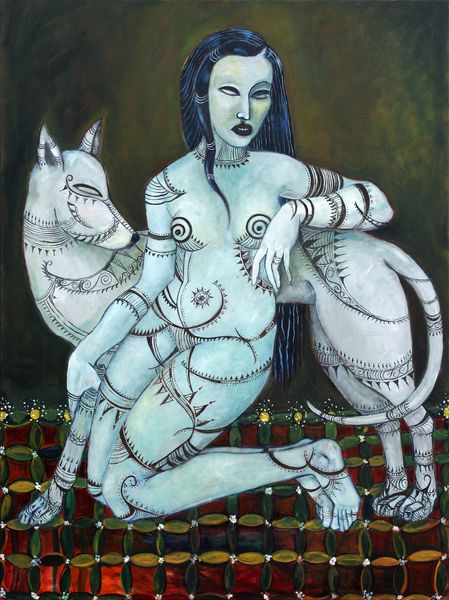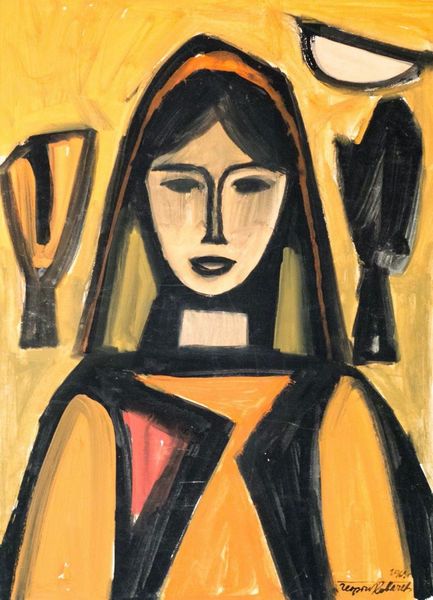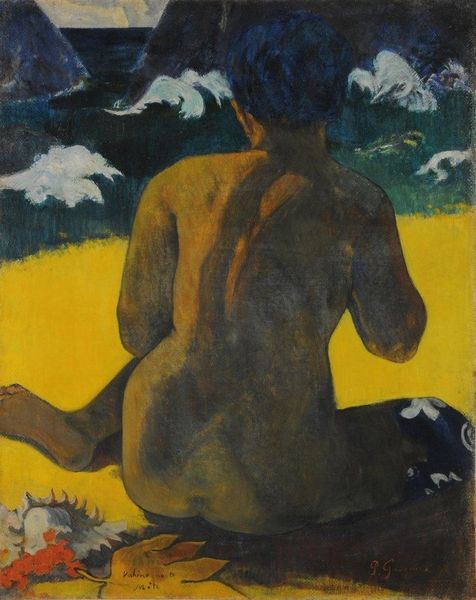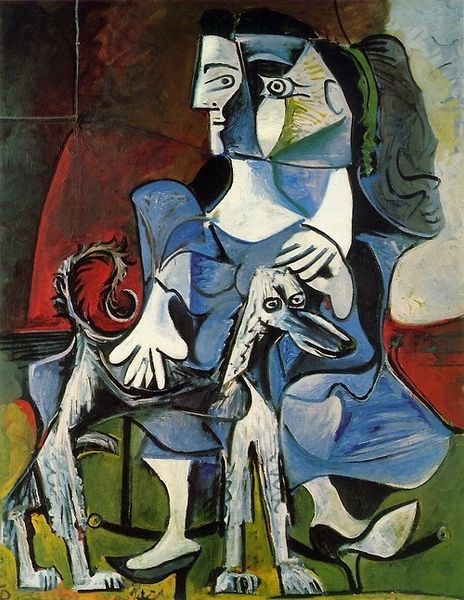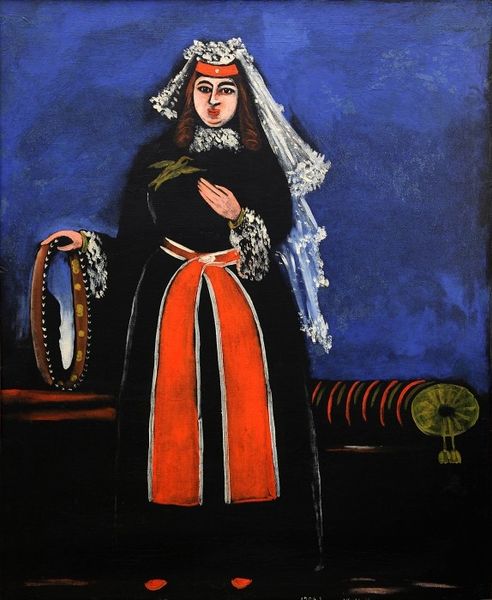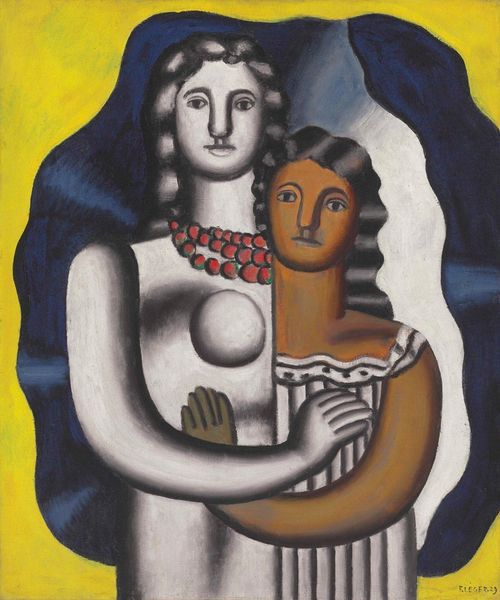
Dimensions: 117 x 94 cm
Copyright: Public domain
Curator: We're standing before Niko Pirosmani's "Actress Margarita," created around 1909. The painting is part of the Art Museum of Georgia's collection here in Tbilisi. Editor: My immediate response is one of dreamy unease. There's something quite haunting about the flattened perspective, the stark coloring and Margarita’s rather ghostly visage. The birds especially evoke an ominous premonition. Curator: Pirosmani's technique often incorporated impasto, where the paint is thickly laid on the surface, giving a tangible, textured quality. He painted on oilcloth, often black, using the dark background to create stark contrast. It was part of his attraction to working-class bars and inns, where they often provided canvases or even walls. It’s also aligned to his unique outsider status as an artist with little or no formal training. Editor: It does feel very much outside of academic art traditions, pushing beyond formal portraiture. Given that the actress Margarita de Sevres, as the story goes, left Pirosmani heartbroken, the somewhat frozen portrayal becomes imbued with intense melancholy. Look at how her hands are positioned, passively open—they indicate an absence of control, a yielding to the circumstances of her situation as an artist and perhaps to an unhappy, doomed romance. The folk art sensibility, too, pulls on traditions outside of academic representation. Curator: Pirosmani’s romantic, even naive, style drew on local culture and tradition. He romanticized an idea of Georgia, capturing everyday life. It can be analyzed from both romantic and politically symbolic views, though. How does this intersect, do you think? Editor: I would suggest it emphasizes the limited, objectified roles of women in Georgian society and art. While Margarita is ostensibly the subject and object of Pirosmani’s longing and artistic impulse, what are we actually learning *about* her beyond his interpretation and fantasy? We, as observers, need to acknowledge our role in sustaining a similar tradition. I can’t see this work outside of that conversation now. Curator: Those points are helpful in approaching an iconic yet very elusive character and painting within Georgia’s art history. Thanks for drawing that all out, looking at the wider context. Editor: It's crucial to understand how gender and socio-political issues contribute to our understanding of historical art and how they impact current issues and perspectives. Thanks, as ever, for bringing your own insights to this fascinating portrait.
Comments
No comments
Be the first to comment and join the conversation on the ultimate creative platform.
